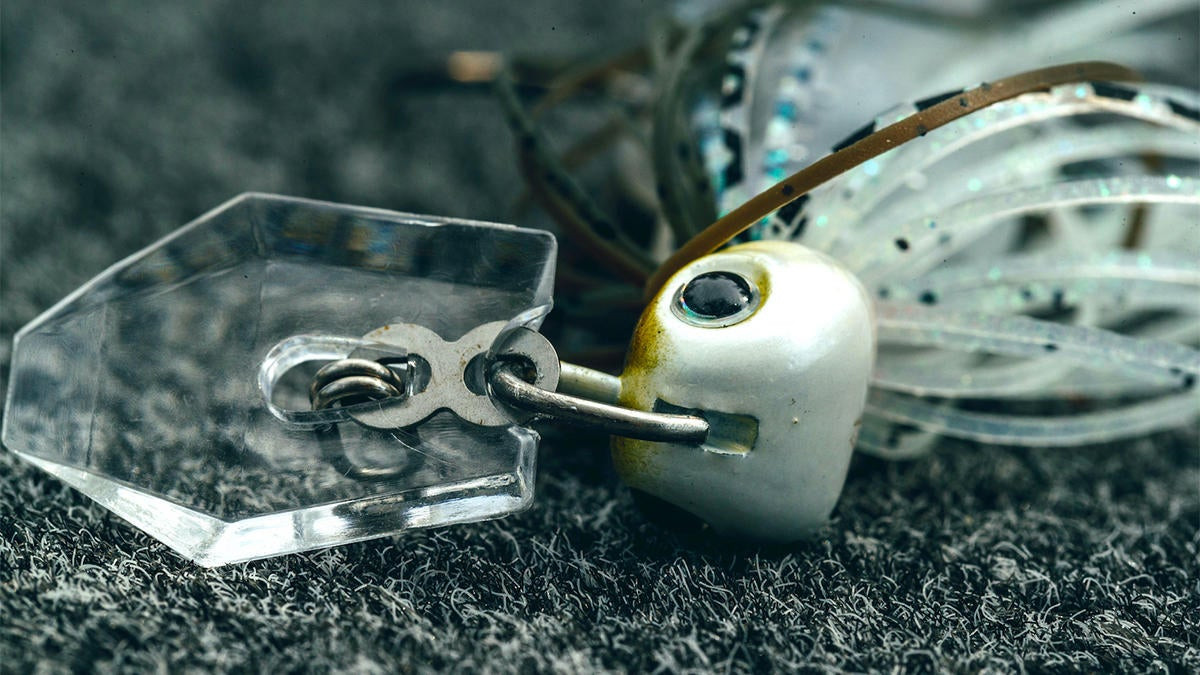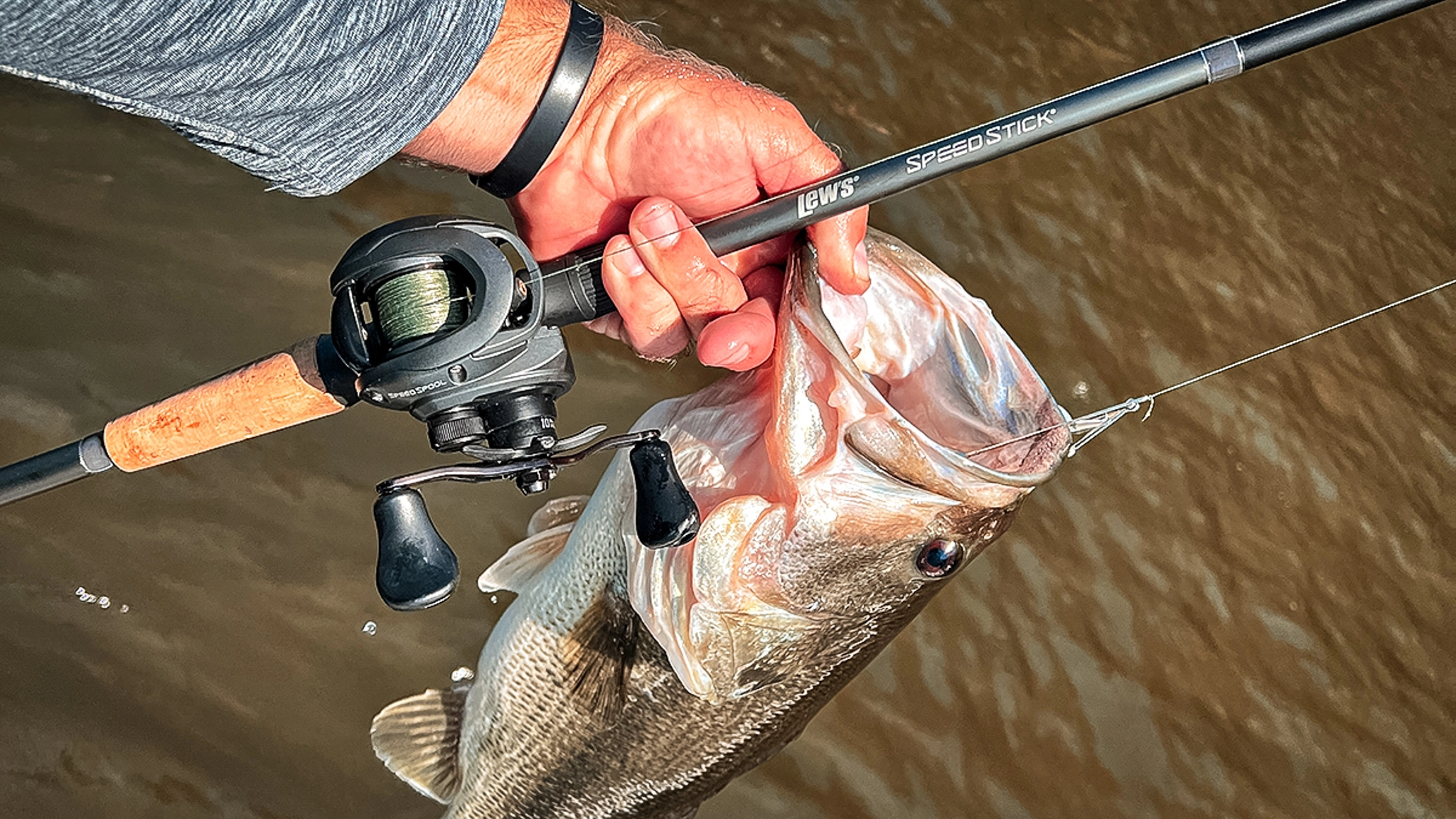Remember your high school geometry class? Turns out, all that gibberish about vertices and isosceles triangles carries weight in the real world… the fishing world.
Lucky for all you slackers out there, professional angler Brett Hite was one of the few who paid attention in math class.
It’s all about the geometry
“Geometry, man. The right dialed in blade shapes, bends and angles are the biggest reasons your personal best bass probably ate a ChatterBait JackHammer,” exclaims Hite, Bass Pro Tour angler and a talented lure designer. “Building a ChatterBait that hums; that thumps and performs with the first half-turn of the reel handle is all about calculated geometry. It’s about oscillation and water displacement and achieving precise angles between line, blade and jighead.
“But the same math doesn’t apply in every fishing situation or body of water,” Hite continues. “Sometimes, a different vibration and pitch, a subtler flash, or a tighter action and smaller footprint can produce twice as many bites. Given a need for an even more refined bladed jig, we ultimately developed JackHammer 2.0, a.k.a. the StealthBlade.”
A subtler action for pressured fish
Indeed, by the time the original JackHammer started boating mega bags of bass, Hite and professional Japanese angler Morizo Shimizu knew the time to concept a stealthier, slightly downscaled version of the pro-grade bladed jig had already arrived. Bass in certain heavily pressured and clear water fisheries, they believed, would eventually turn wise to the metal-bladed JackHammer. In Japan, where crystalline waters and intense, concentrated fishing pressure abounds, anglers like Morizo were already envisioning a refined ChatterBait variant.
Right after winning a Best of Show award at ICAST 2020, the freshly minted ChatterBait JackHammer StealthBlade-the second collaboration between Z-Man Fishing and Ever Green International-began producing livewells full of mongo bass.
“But months later, anglers were still asking me things like why the StealthBlade didn’t vibrate like the original JackHammer,” noted Hite. “The answer of course was that the lure was never intended to mimic the OG. Rather, the StealthBlade is a complement to the original-a refined, almost covert presentation that quietly enters the bass’ world and stimulates big bites when they’ve already seen parades of traditional lures. The StealthBlade almost serves as the ghostly yin to the more aggressive yang of its metal bladed brethren. Both baits have a place, and for me, it’s all about the stealth when the lake goes dead-slick and skies turn bluebird-or anytime I’m fishing near other anglers throwing regular bladed jigs.”
All of which seems reasonable-in theory. But until you’ve seen and heard the difference between the two lures underwater, it’s impossible to fully appreciate both sides of the bladed jig spectrum.
Immediately after diving beneath the surface to capture and compare the flash, action and vibration of each lure, the crew at Ever Green International made a compelling discovery.
It actually sounds like a HyroWave unit
While listening to the StealthBlade audio, Hite, Shimizu and Seiya Muto of Ever Green realized they’d heard the sound before. “We discovered that the high pitch of the StealthBlade’s vibration, created by its light clear blade striking the jighead, closely parallels the real bait sounds emitted by our HydroWave units,” suggested Muto, senior manager at Ever Green. “The StealthBlade puts out a restrained, high frequency vibration, almost imperceptible to human ears. But to a bass’ lateral line and inner ear, it’s sweet music.”
In terms of optics, Hite notes that the underwater footage also depicts powerful visuals of each lure’s specific flash and action.
“When you watch the footage, you’ll see what happens as a result of the smaller, clear polycarbonate blade,” notes Hite. “Under water, the blade almost disappears; just offers the slightest flicker of life-the perfect visual inducement in stealthy situations. The blade’s beveled edges and the way it tracks relative to the jighead produce a higher frequency vibration and a totally unique action. Makes the jig, skirt and trailer swim and undulate on super subtle, though perhaps even more lifelike levels.”
Hite further suggests that the StealthBlade’s minimalist façade removes most negative visual cues. “Like a crankbait, the transparent blade falls out of the picture during the retrieve. Its relatively sparse skirt, lightwire fluorine-coated Decoy hook and discreet oval split ring combine to present a clean, lifelike lure.
“Contrast all that with a regular JackHammer in the video and audio,” Hite suggests. “Loud, low-frequency pitch. Lots of flash and a super-wide wobbling action. Killer combination in stained and dirty water, of course. But at times, too much of a good thing.”
Hite redirects attention toward the StealthBlade’s angular-edge hex-blade. “We tweaked angles, shapes and material thickness until the blade ‘started’ effortlessly and rocked against the jighead at the pitch we wanted. Enough water displacement to ping the hearing systems of bass, but not enough to put pressured fish off the bite.
“Look at the way the blade’s movement just barely quakes and quivers the skirt. How the little straight-tail trailer shimmies and wags on super subtle levels. You can see why less can be so much more. Can’t stress enough the advantage of occasionally putting down the ‘hammer, and when the time’s right, flying the little stealth bomber for big bites.















